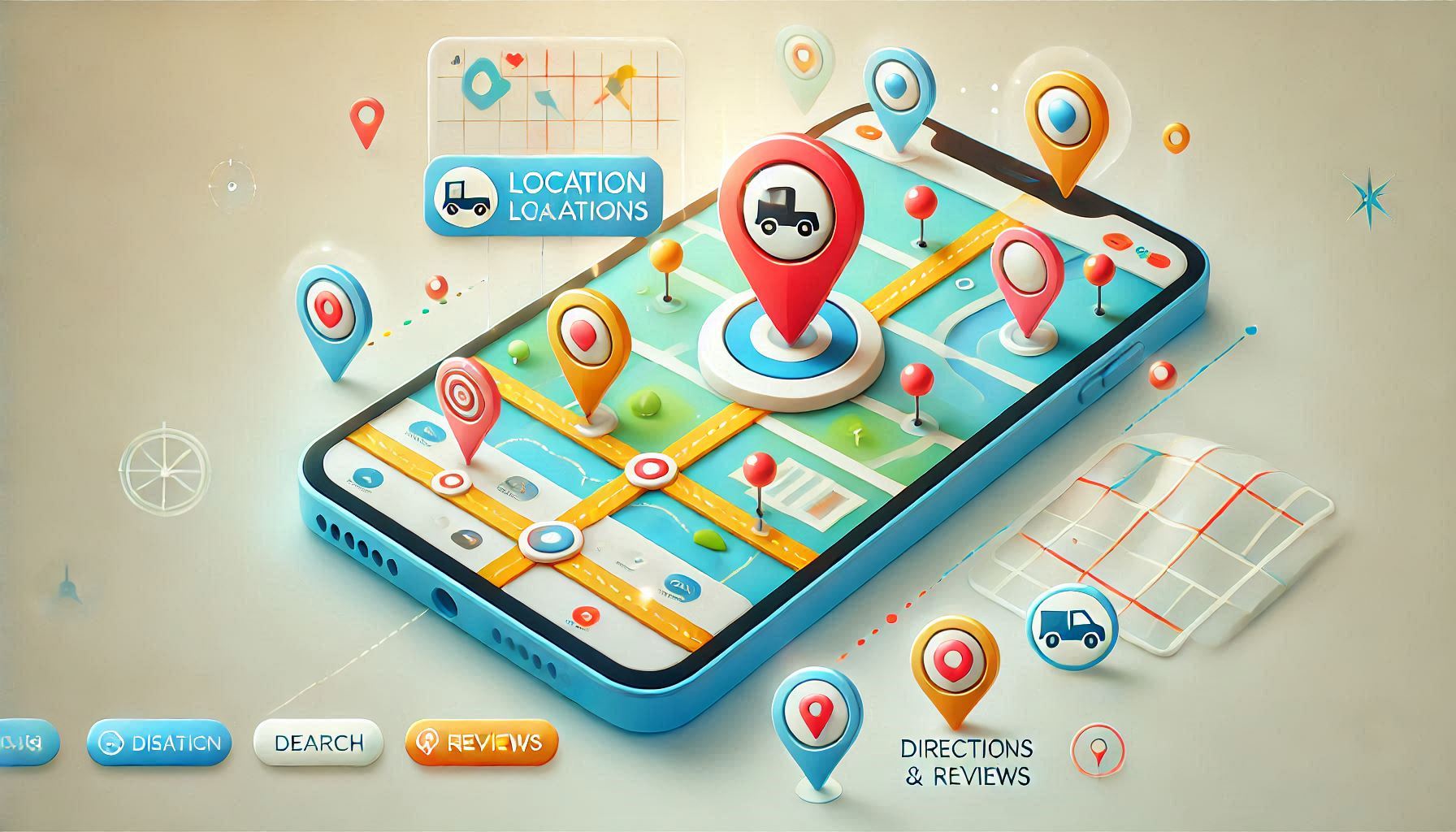
When it comes to integrating geolocation and mapping functionality into applications, Google Maps API is one of the most powerful tools available. Whether you’re building a local business directory, a real-time location tracker, or a place-based review system, the Google Maps API provides the essential features and endpoints to make it all possible.
In this blog, we’ll guide you through the key features of the Google Maps API, focusing on what beginners need to know to get started. We’ll also explore how these features can be used to enhance applications that depend on location-based data.
The Google Maps API is a set of programming tools and services that allows developers to embed Google Maps into their websites or mobile applications. The API provides access to a variety of mapping features, including location search, geocoding, reverse geocoding, place details, and more. It's a versatile and powerful tool that can be used for everything from showing interactive maps to retrieving detailed information about businesses, places, and geographic locations.
This API offers multiple endpoints that cater to different location-based needs, such as finding local businesses, getting reviews for places, converting addresses into coordinates, and even tracking geolocation data. The flexibility and ease of integration make it ideal for developers who need to add mapping capabilities to their applications.
To help you get started, here are the most important features of the Google Maps API for beginners:
One of the primary functions of the Google Maps API is the ability to search for local businesses based on a variety of criteria. Whether you’re looking for restaurants, cafes, shops, or any other type of business, the API allows you to retrieve detailed business information such as:
You can also filter the results based on distance, ratings, and types of businesses, making it easy for users to find exactly what they are looking for.
Example API Call for Searching Businesses:
axios.get('https://maps.googleapis.com/maps/api/place/textsearch/json', {
params: {
query: 'restaurants in London',
key: 'YOUR_API_KEY',
},
})
.then(response => console.log(response.data))
.catch(error => console.error(error));
This API can be used for a variety of applications such as building local business directories, integrating location-based search in travel apps, or helping users find services near them.
Geocoding is the process of converting a physical address into geographic coordinates (latitude and longitude), which can then be used to place markers on maps, calculate distances, or track movements. Reverse geocoding, on the other hand, converts geographic coordinates back into an address.
Example API Call for Geocoding (Address to Coordinates):
axios.get('https://maps.googleapis.com/maps/api/geocode/json', {
params: {
address: '1600 Amphitheatre Parkway, Mountain View, CA',
key: 'YOUR_API_KEY',
},
})
.then(response => console.log(response.data.results[0].geometry.location))
.catch(error => console.error(error));
Example API Call for Reverse Geocoding (Coordinates to Address):
axios.get('https://maps.googleapis.com/maps/api/geocode/json', {
params: {
latlng: '37.423021,-122.083739',
key: 'YOUR_API_KEY',
},
})
.then(response => console.log(response.data.results[0].formatted_address))
.catch(error => console.error(error));
Geocoding and reverse geocoding are invaluable features for apps dealing with addresses, maps, and GPS-based services.
Every place on Google Maps has a unique place_id, which can be used to retrieve detailed information about the place. This information may include the name, address, phone number, user ratings, photos, and more.
Using the place_id, you can easily access up-to-date information about any location, making it perfect for integrating detailed business or place data into your app.
Example API Call to Retrieve Place Information:
axios.get('https://maps.googleapis.com/maps/api/place/details/json', {
params: {
place_id: 'PLACE_ID',
key: 'YOUR_API_KEY',
},
})
.then(response => console.log(response.data.result))
.catch(error => console.error(error));
This feature is especially useful for building applications that need to display detailed information about businesses, tourist attractions, or any other places of interest.
User reviews are a critical feature for any location-based app. With the Google Maps API, you can retrieve reviews for a specific place using its place_id. Reviews include valuable information such as user ratings, comments, and the time of the review.
Example API Call to Retrieve Reviews:
axios.get('https://maps.googleapis.com/maps/api/place/details/json', {
params: {
place_id: 'PLACE_ID',
fields: 'review',
key: 'YOUR_API_KEY',
},
})
.then(response => console.log(response.data.result.reviews))
.catch(error => console.error(error));
Including reviews in your application enhances the user experience and allows your users to make informed decisions based on other people’s experiences.
Before you can use the Google Maps API, you need to create a project in the Google Cloud Console. This is where you will manage your API keys and access control.
For making API calls, you can use any HTTP client such as Axios, Fetch API, or others. Here’s how you can set up Axios in your JavaScript project:
npm install axios
Once you have the API key and Axios installed, you can start making requests to the Google Maps API, as shown in the examples above.
The Google Maps API is a powerful tool for integrating location-based functionality into your applications. Whether you’re building a local business directory, geolocation-based tracking service, or an app that needs detailed place information, the API offers the necessary features to make it happen.
With capabilities such as geocoding, place details, business search, and reviews, the Google Maps API is an essential resource for developers working with location data. Now that you understand the basics of how it works, you can start incorporating these features into your own applications to create richer, more engaging user experiences.
Hi there!
Let's help you find right APIs!